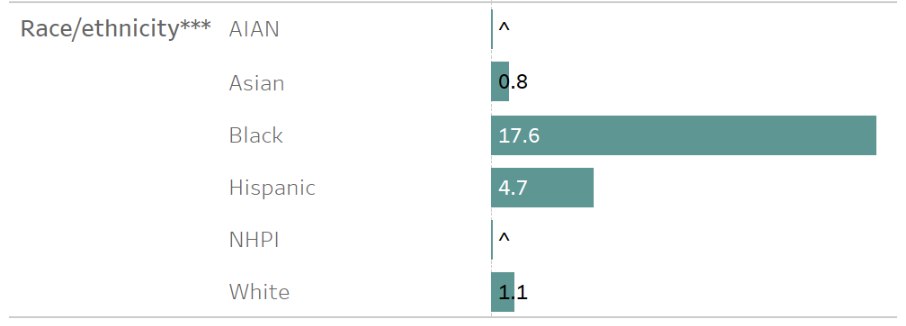Updated data on the Impact of Firearms in King County show an increase in firearm violence among King County residents
In 2021, 193 King County residents were hospitalized after being shot. In 2022, 216 King County residents died from firearms. And in 2023, King County Emergency Medical Services responded to 861 incidents involving firearms.
Countless more people in our communities felt the emotional impact of losing friends and relatives or witnessing firearm violence, or the sustained physical and emotional disabilities that can result from being shot. Any injury or death from firearms is unacceptable, and examining data is the first step in understanding this public health problem.
In 2018, Public Health – Seattle & King County’s firearm injury data team produced its first public facing data dashboard with firearm-related data to complement static reports in response to elevated concerns about gun violence after the Parkland shooting. The team is now introducing a redesigned dashboard with updated data to inform policy, prevention, and programming strategies and the general public about the impact of firearms in King County.
The redesigned dashboard features
Firearm-related death data, 2018-2022
Nonfatal hospitalizations due to firearm injuries, 2017-2021
Incidents involving firearms responded to by King County Emergency Medical Services, 2019-June 2024
The dashboard tutorial video provides a walkthrough of how you can explore data in the new design.
Snapshot of the dashboard’s summary page
Data insights: The rise in firearm-related violence
Increase in deaths and injuries
The updated data in the dashboard indicates an increase in gun violence in King County. From 2018 to 2022, there was a 16% increase in the rate of firearm-related deaths. Annual trends show a slow, steady increase in the rate of firearm deaths among King County residents from 2012-2022, and the increase in the annual rate of nonfatal hospitalizations involving firearm injuries from 2012-2021 is clear (see below). The number of EMS-treated firearm injuries increased 12% from 2022 to 2023 – further evidence that more people each year are burdened with the lasting consequences of gun violence.
Steady increase in the annual rate of nonfatal firearm-related hospitalizations from 2012 to 2022
King County’s young adult population is disproportionately impacted by gun violence. In 2017-2021, young adults ages 18-24 were hospitalized with a nonfatal firearm injury at 3 times the rate of all King County residents (see below). Death certificate data from 2018-2022 show similar disproportionate impacts, as young adults ages 18-24 died by firearms at twice the rate of all King County residents.
In 2017-2021, males and young adults had higher rates of hospitalizations for nonfatal firearm injuries
In 2018-2022 male residents in King County died at a rate of 14.9 per 100,000, 7 times the rate of female residents. Males were also hospitalized for nonfatal firearm injuries at a rate 7 times that of females during the 2017-2021 period. Each year from 2019-2022, EMS treated about 4 males for every female in firearm incidents, further illustrating the greater burden of gun violence male residents experience.
What kind of firearm related incidents occurred the most, and among whom?
Based on 2017-2021 nonfatal firearm hospitalization data, 48% of firearm related hospitalizations in King County were due to assaults. Among these hospitalizations, young adults ages 18-24 and males had the highest rates. Hospitalizations due to unintentional firearm discharges follow at 43%. Annual data from 2012-2021 show a steady increase in the rate of hospitalizations due to unintentional firearm discharges, highlighting the importance of continued firearm safety and storage practice efforts.
Among King County residents who died from gun violence in 2018-2022, 61% died by suicide. Adults 65 years and older had the highest rate of firearm suicide at 10.2 per 100,000. Firearm homicides account for 34%, or 1 in 3, of firearm deaths. Annual trends show a slow increase in the rate of fatal homicides county-wide since 2012 (see below). Black/African American and Hispanic communities are most affected by firearm homicides compared to other communities in King County (see below).
Increase in the annual rate of firearm-related homicides from 2012-2022
In 2018-2022, there were higher rates of firearm-related homicides among Black and Hispanic communities
Other King County prevention initiatives
Lock It Up Program
Public Health – Seattle & King County’s Lock It Up program promotes safe firearm storage to prevent injury and theft. The program works with firearm retailers, shooting sports facilities, law enforcement agencies, and community partners in King County to encourage firearm owners to secure their guns when they are not being used or carried. With the help of generous funding from the Washington State Department of Commerce’s Office of Firearm Safety and Violence Prevention, the Lock It Up program is expanding to support health departments and community partners statewide!
King County Regional Office of Gun Violence Prevention
The King County Regional Office of Gun Violence Prevention (ROGVP) seeks to prevent and eliminate gun violence and ensure equitable health outcomes for all by providing life-affirming care and resources to individuals and families who are most impacted by unjust systems.





